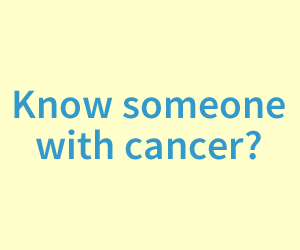We're back, alive and kicking!
It's been over a year and 9 months since we've posted to this blog. Since then, much has happened. My wife and I feel as if we've lived an entire lifetime in that short duration.
Yes, we suddenly ceased blogging back in Nov 2010. We had to immediately divert and focus our attention towards dealing with a local recurrence of her synovial sarcoma. However, she is still alive today and well. So much has happened that I don't even know where to start.
In summary, she had a local recurrence, which was temporarily controlled with Coley's Toxins monotherapy. We have serial month-apart MRIs that confirm shrinkage due to Coley's. However, after 2 months of shrinkage, we detected reversal regrowth. We have a theory as to why that happened (We will elaborate in a later post).
Upon recurrence, we immediately went for cryoablation of the recurrent tumor. By then, we had already agonized over whether to follow conventional recommendations for surgery or whether to go for unproven cryoablation. The decision for cryo was by no means taken lightly. Our conventional clinicians, along with a consultant from another cancer center all advised surgery. One had no comment on cryoablation whereas the other two offered poor opinions of cryoablation. This is understandable as recent advances in cryoablation are still not widely understood. Many clinicians believe it cannot completely kill tumor. However, leading cryoablations will tell you that if the latest cryoablation technology is used in experienced hands, the kill capability is complete and predictable. (In my opinion it may even be superior and more definitive than radiation).
Furthermore, the de-facto recommendation to do surgery did not make sense for my wife's case. By the time we had to choose cryoablation vs surgery, we had already obtained multiple expert opinions from oncologists and head&neck surgeons at leading sarcoma centers. One told us that no matter what we tried, the likelihood of a surgical cure of the locally recurrent tumor was close to zero. The other institution was a little more optimistic but still poor prognosis (20% probability of getting it all). These discouraging prognoses from the leading sarcoma centers skewed us towards favoring cryoablation as a synergistic tumor-debulking strategy neoadjuvant to further immunotherapy.
In layman's terms, since our odds of completely cutting it out was virtually zero, we thought it made sense to try to harness cryoablation & immunotherapy to get rid of the bulk and shrink the tentacles first. Cryoablation would kill the bulk of the tumor. The problematic tentacles would require some systemic treatment. We intended to revisit Coley's Toxins for that. Secondly, cryoablation has a long history of documented abscopal effect by itself—meaning that if you cryoablate one tumor, some other distant tumor(s) start to shrink. Investigators theorize this is due to an immune effect whereby dead cryo-ed tumor antigens remaining in the body serve as an in-situ vaccine to prime the immune system. This effect is normally short lived. We wanted to harness some of that effect and possibly augment it with Coley's Toxins. If this combination could somehow shrink the tentacles, we would at that time consisder a radical resection to cut out the confined remnant cancer cells.
Readers familiar with standard of care for recurrent synovial sarcoma will wonder why we didn't choose high dose ifosfamide to shrink the tentacles. The reason is she had extremely poor recovery from first line doxorubicin/ifosfamide. It took her 2 years for her neutrophils to get back above safe level of 1.5. We felt that high dose ifosfamide would surely kill her.
To try keep a very long story short(er), the cryoablation was done, followed by unexpected complication of spontaneous pneumothorax in her lung. This was further complicated by a misplaced chest tube that necessitated further lung surgery. This led to a one month delay before we could resume immunotherapy.
When she finally got out of the hospital, we changed course and decided to head to Germany to perform dendritic cell vaccination along with natural killer cell infusions instead of resuming Coley's Toxins. We felt that the scientific basis behind DC vaccination made sense. Secondly the NK cell infusions, though a long shot, could in theory wipe out any remnant minimal disease. Thirdly, due to the lung trauma from pneumothorax and lung surgery, we wondered if this might be a little easier on the body as compared to Coleys (something which we know don't think was a valid concern).
In Germany, our physician employed Newcastle Disease Virus and electro-hyperthermia (a.k.a oncothermia). We did this combination NDV+oncothermia+DC vaccine+NK infusions for 3 months after which we returned home for Christmas 2011. At that point, we had hoped to have shrunk the tentacles adequately such that surgery would seal the deal. After much debate, entertaining opposing views on how large a resection should be done, we were all set to resect only the cryoablated tissue, without removing adjacent mandible(jaw) bone. However, an MRI 2 days before surgery revealed a 1cm lesion clinging onto the condyle, which is the portion of bone just below the TMJ joint.
We were forced to make a snap decision, under a great deal of stress, whether or not to remove the bone, and not just soft tissue. The implications for quality of life were not insignificant. She would lose her right TMJ joint, along with the entire right ramus of the mandible. This would lead to massive crossbite making it hard to eat. Since the expert opinions inferred that a surgical cure would be impossible (no way to get it all), we were basically betting on unprovenimmunotherapy to make a difference.
The gamble was as follows: Do the radical resection and you lose the jaw, have lifelong difficulty eating, and have significant cosmetic issues, while on the other hand increasing your odds of getting all of the cancer, if indeed immunotherapy has managed to shrink the tentacles. Conversely, do a limited resection and you avoid losing the jaw joint, with very limited cosmetic and no problems eating.
After agonizing the entire day before surgery, and also the next morning, right up to the time she had to check in for surgery, we finally decided to go for broke. We told the surgeon that very morning that we wanted him to do the biggest surgery he could do. Furthermore, we requested that he NOT pad the hole with tissue from her leg. Our rationale for declining the free flap (tissue padding) was it would (1) delay recovery, thus delaying resumption of immunotherapy (2) lead to growth factors / angiogenesis at the surgical site that may promote tumor growth.
Surgery went well with no complications despite prior surgery, 66 Grays radiation to the site. We believe this is due to the superior healing effect of prior Coley's Toxins therapy she had. Pathology came back confirming synovial sarcoma. But more importantly, all margins were negative! For sarcoma, very large margins are desired. However, in this tight location in the head (infratemporal fossa), large margins are impossible to obtain. This is why the expert opinion from MSKCC insisted that a surgical cure is impossible.
Of interest, the pathologists could not find ANY viable tumor in the previously cryoablated zone. The mandible that was removed was also found to have no tumor. There is no doubt in our minds that this is because the cryoablation ball encompassed (went right through) the affected mandible.
The only area with viable tumor found corresponded to the 1cm lesion. However, interestingly, there was no gross tumor visible to the eye. Only when viewed under the microscope, could tumor cells be seen. The tumor cells were interspersed 40-50% with immune cells. Subsequent immunopathology performed by our friends at Ludwig Institute for Cancer Research (the late Dr. Lloyd Old's organization) revealed tumor-infiltrating lymphocytes surrounding and embedding areas of tumor. Most importantly, there were random areas of tumor necrosis scattered around.
This pathology finding was extremely encouraging to us. The negative margins gave some hope. But more importantly, the microscopic-only tumor, infiltrated by immune cells, and the random areas of necrosis strongly implied an immune treatment effect! This implied that the immune system was attacking tumor to a certain extent. We will never know whether the tumor was on the way up or on the way down—that is, whether the fact that being microscopic-only with areas of necrosis implied that what was once gross tumor, was now being lysed by the immune system. Or, on the other hand, whether the tumor was on the way up, growing, despite being partially attacked by immune cells leading to various areas of necrosis.
(Aside: tumors spontaneously necrose when they outstrip their blood supply. In this case, it was a 9mm microscopic-only tumor, surrounded by a large amount of immune cells. This favors the argument that necrosis was immune-induced)
Regardless, this finding has given us hope. We immediately resumed immunotherapy. Even now, as I write, I sit by my wife as she continues her oncothermia—while browsing the internet on her ipod :-) It's completely painless and with insignificant discomfort. We fly to Germany every 6 weeks for DC vaccination along with Newcastle Disease Virus (NDV) infusions and inhalation. More on the inhalation story later. In between, we continue her Coley's Toxins, which to us, is still the only modality that has proven long term cures whereby advanced cancer patients, most of them being sarcoma cases are traceable 10,20,30 years later with no evidence of diease (NED).
She continues to enjoy a relatively good quality of life despite the hard work of having to do these unproven treatments, and the mental/psychological challenges of having to go off the grid to pursue non-conventional therapies. Informed readers will know that upon local recurrence of synovial sarcoma, prognosis of survival is extremely low (like 10-20%). Nevertheless, as of today, she is currently doing well, with no concrete evidence of recurrent disease, 6 months out from surgery, while continuing immunotherapy.
Despite having irked our beloved clinicians in the past with our insistence on pursuing these unproven modalities, we have sensed a softening on their part. This may be because of the non-toxic nature of these treatments where there has at least been no harm done, but probably more so because of the Coming of Age of Cancer Immunotherapy.



